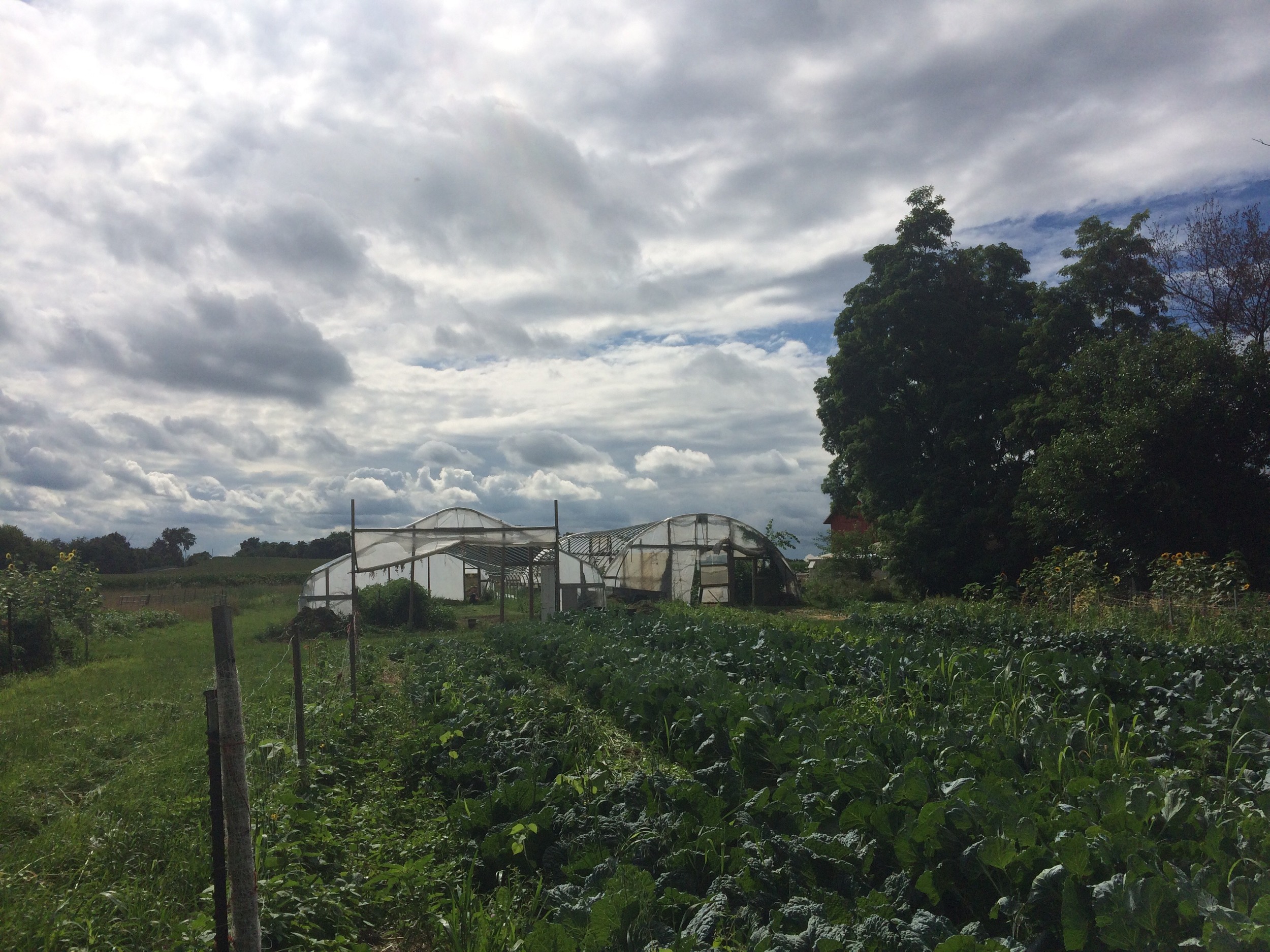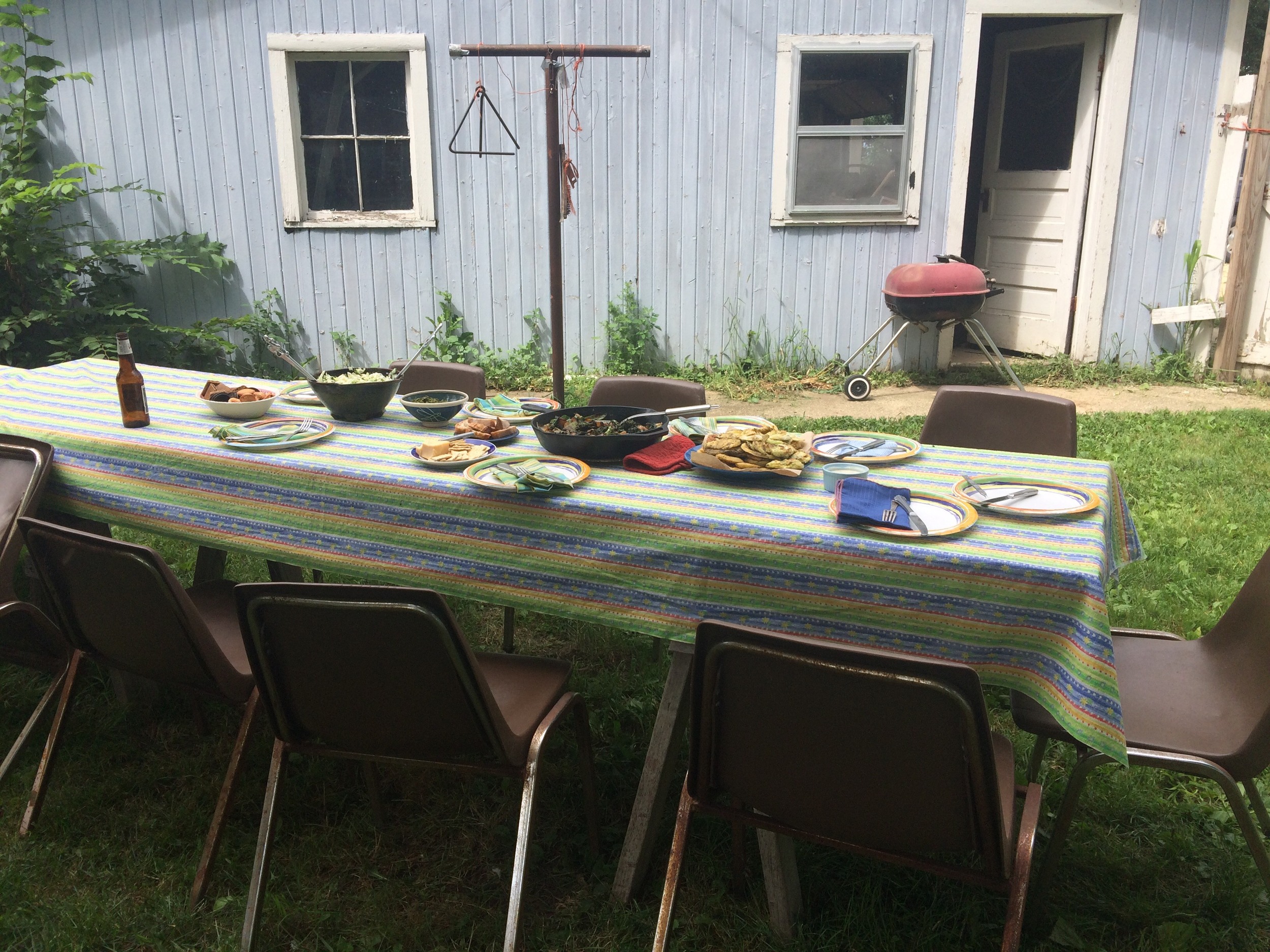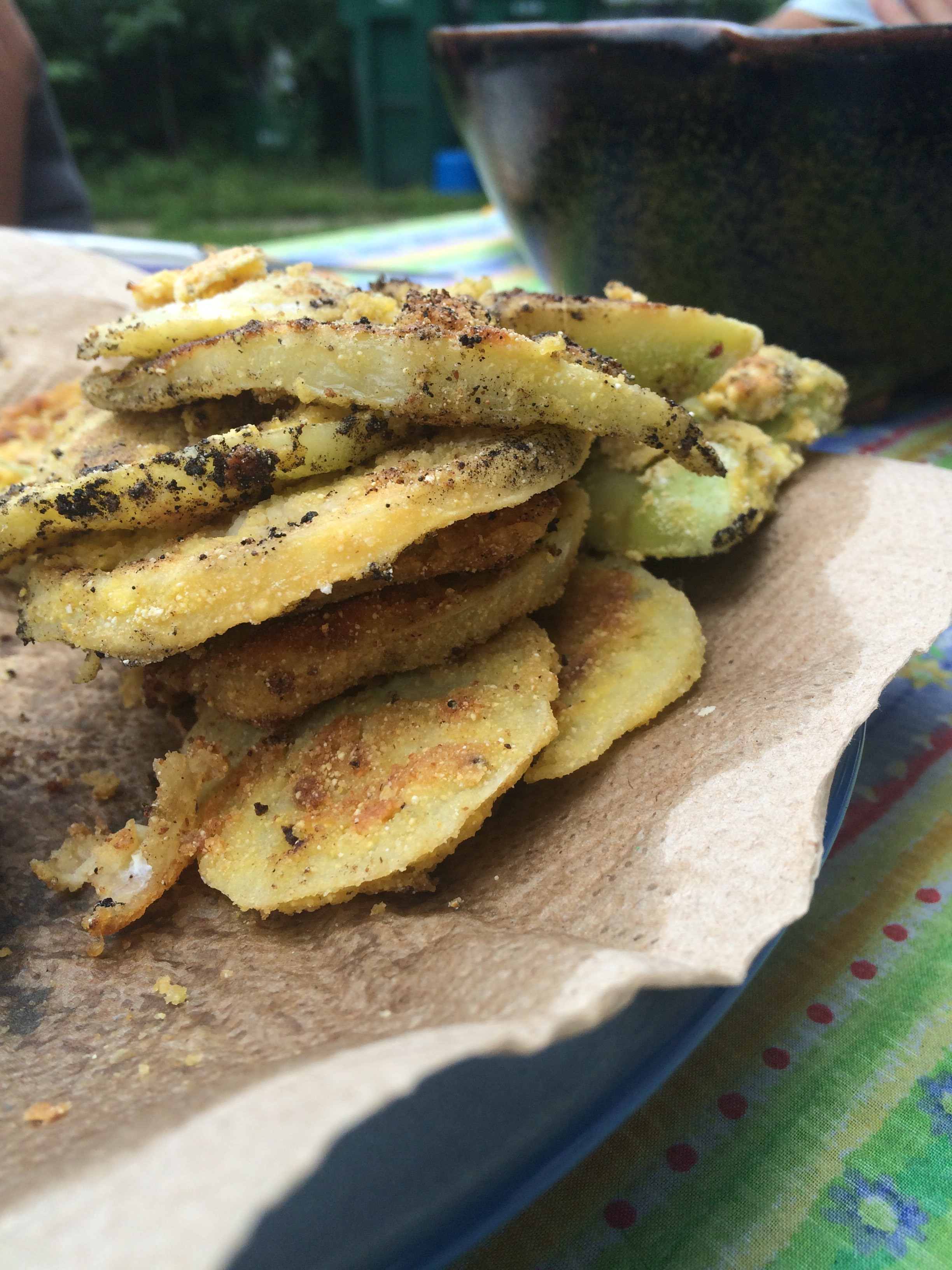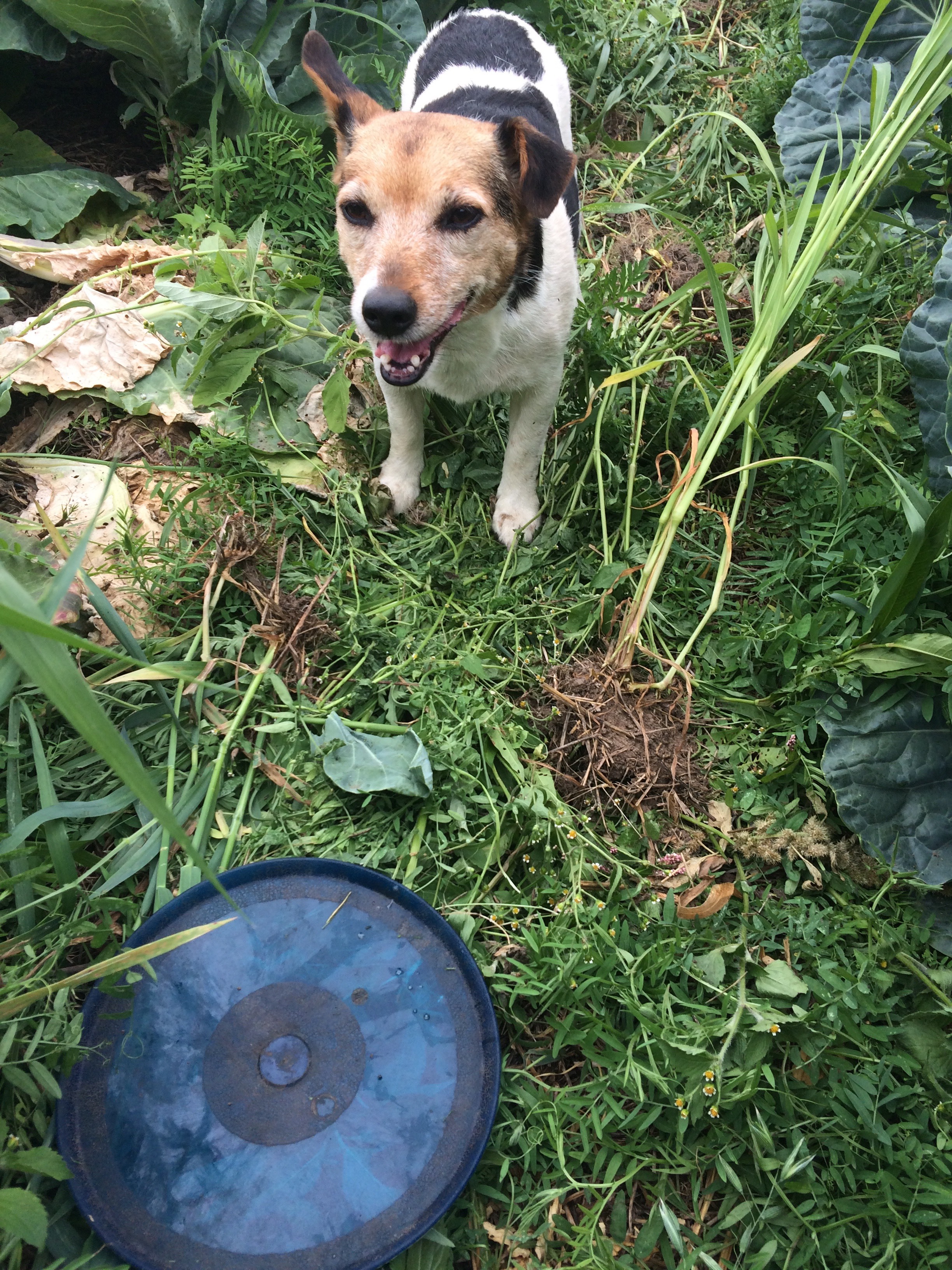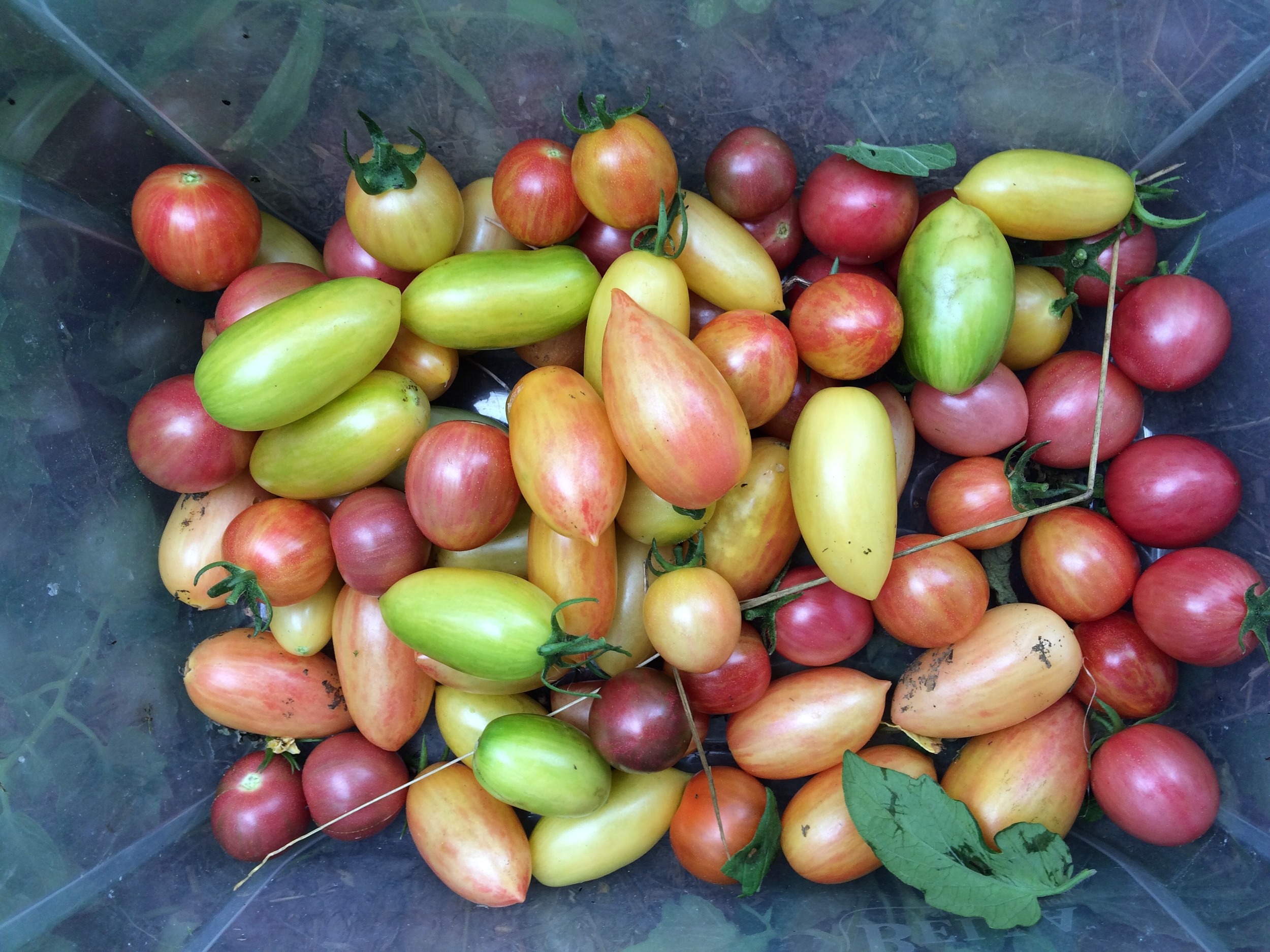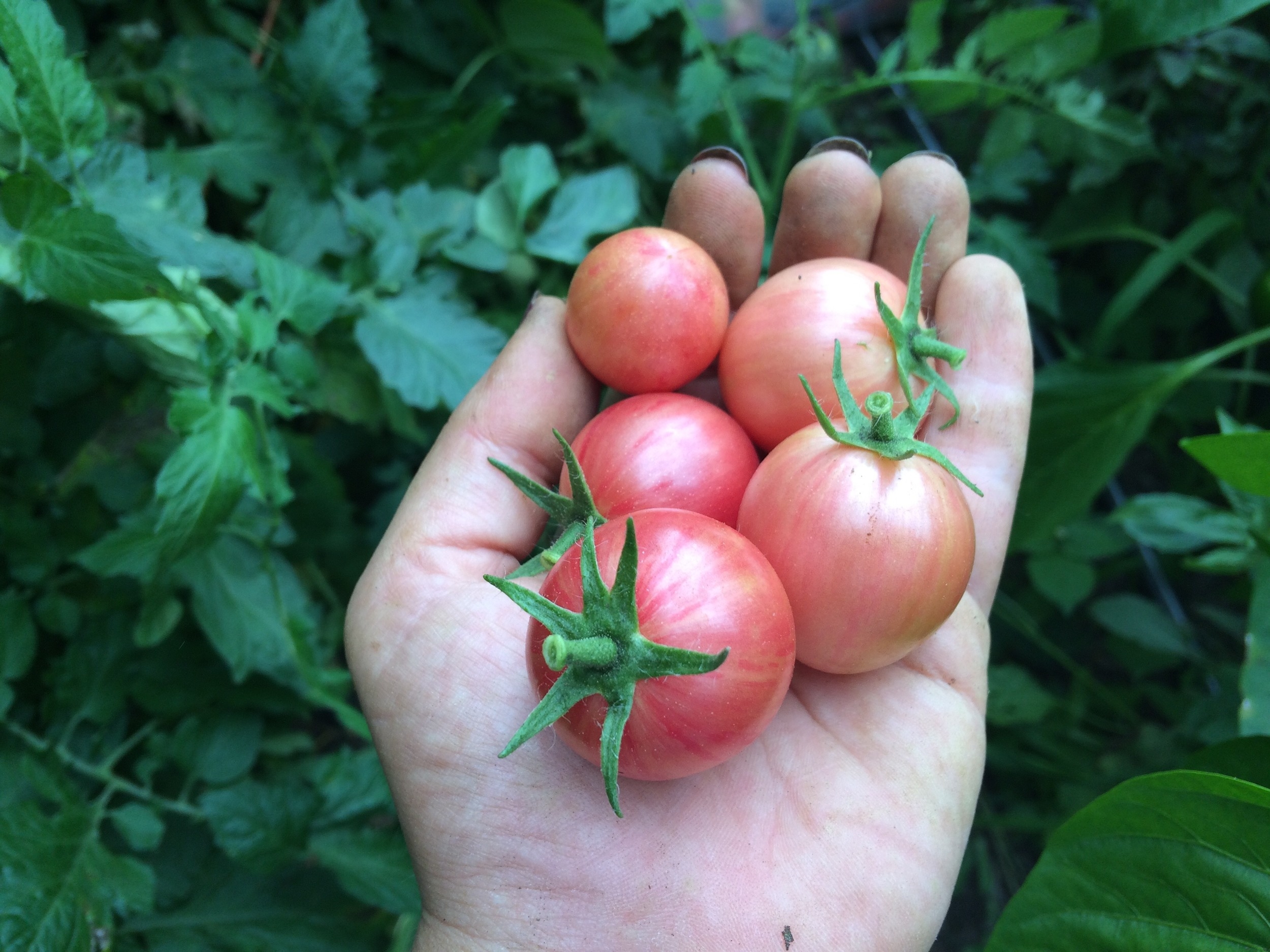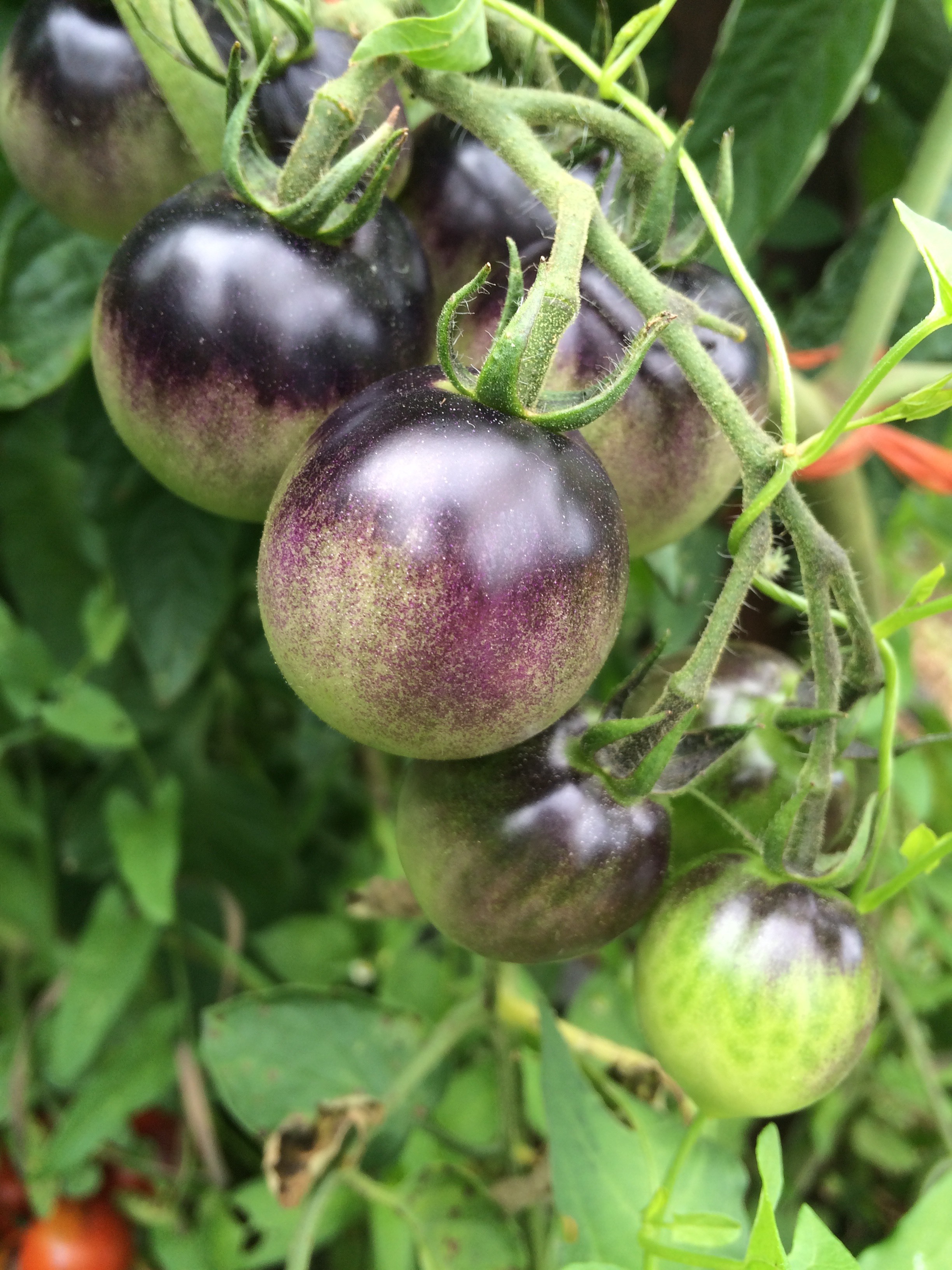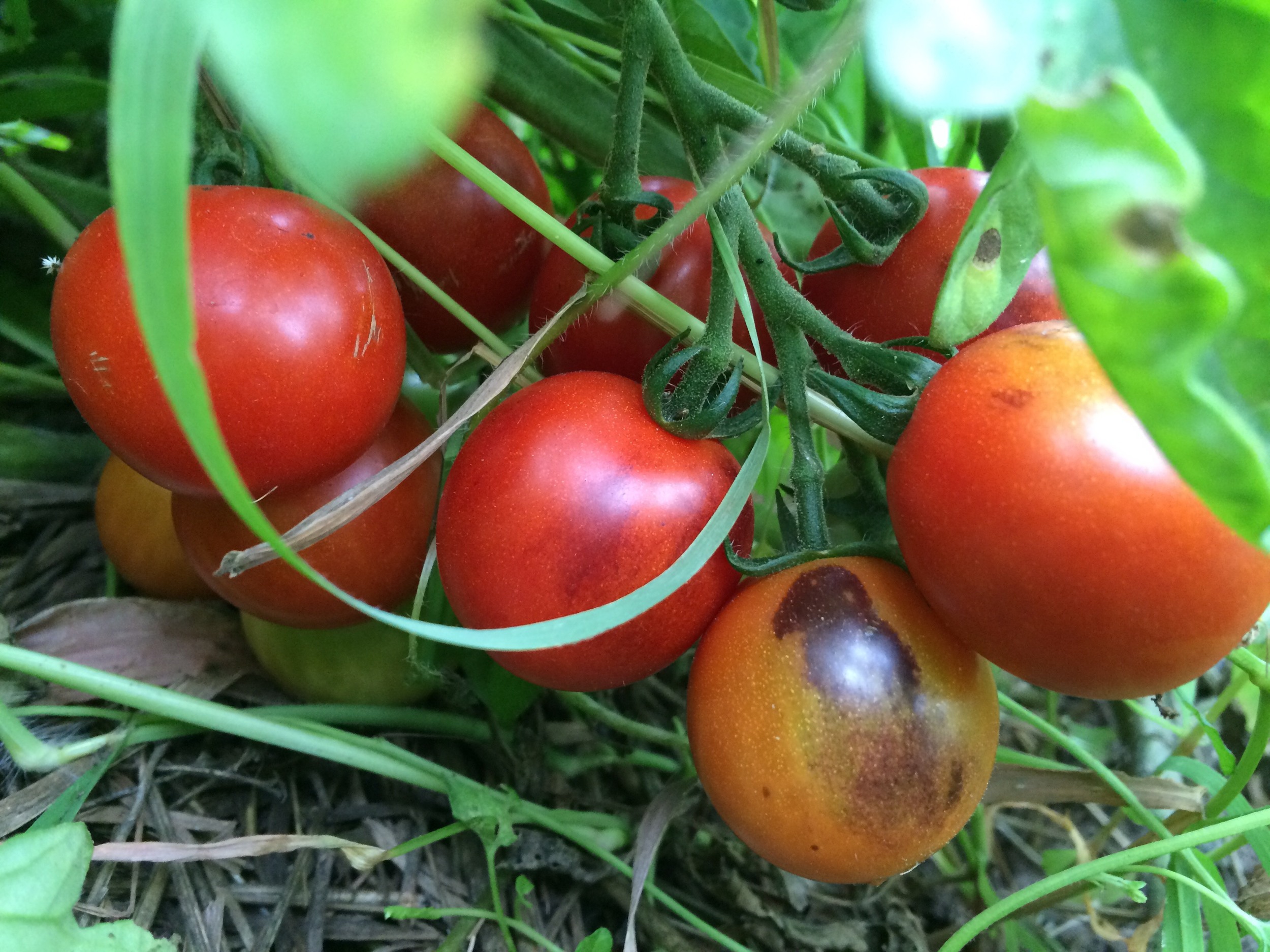Recipe Links: Wisconsin Week 7
/Lettuce mix, cucumbers, gold and red beets with beautiful tops, Rossa di Tropea onions, cabbage, broccoli or purple peacock, zucchini, and patty pans.
A visit to the farm
This Friday Blake and I stepped away from our day jobs to put in a bit of volunteer time at the farm. What started as a drizzly grey day in Madison became a welcome cool day on the farm. After greeting Dela and meeting Elise, Scotch Hill's intern for the next few weeks, we headed to the gardens to begin work for the day.
Our work day began in the garden rows, pulling weeds from among the broccoli, cauliflower, and Swiss chard plants. The morning rain had moistened the soil and made the weeding light work for us. As we worked up and down rows of beautiful vegetables, we caught up with Dela and got to know Elise a little bit. After freeing several rows of vegetables from the stranglehold of quickweed, super weed amaranth, and some rogue grasses, we broke for lunch.
While Dela and I pulled together a salad and a vegetable stir-fry from some squash, kohlrabi, turnips, and other veggies fresh from the gardens, Elise fried a plate of green tomatoes for everyone to share. To that, Dela added some cheeses, crackers, bread, and raspberries from the patch near the house. Gathered around the lunch table, we relaxed and enjoyed good food and cheerful conversation, with the occasional reminder from Roxanne that there were more important tasks to be done. Although her priorities seemed focused on frisbee chasing, we heeded the terrier's reminders and headed back to work, but not before preparing ribs to slow cook until dinner.
After a enjoying lovely lunch spread, we returned to our farm chores--I helped Dela and Elise finish weeding rows of cauliflower and Brussels sprouts while Blake went back to work building trays for a solar dehydrator. Once the weeding was finished we checked in on the tomato plants, on Dela's hunch that there would be ripe fruit somewhere in the rows. Sure enough, low down on the plants, we found dozens of beautiful tomatoes--the first of the season! The variety in color, shape, and size was astonishing, as was their flavor! We're eagerly awaiting their arrival in shares soon.
I closed out my volunteer day by harvesting six pounds of Maxibel green beans, an heirloom French variety which happen to be my favorite variety of green beans. I adore the slender green beans with their delicate summery flavor. Over the years I have picked a few buckets of these beans from their pretty plants, learning to push the plant this way and that hunting for beans hiding beneath leaves, near stems, or down along the ground. Although I was too late to plant beans in my own garden this year, I was happy to see the bean plants at the farm producing well.
Beans weighed, labelled, and stowed in the cooler, I joined everyone around the table once more, this time to enjoy ribs from the farm, in addition to the leftover vegetables from lunch and a few other additions. We dined together with Tony and Dela's family until the sun slipped below the horizon.
Cabbage
When we're not making summer slaws of various types, I'll quarter a cabbage or slice it into very thick slabs (at least 1 inch), drizzle it with olive oil, sprinkle with salt and roast it on high heat (400-450 degrees or so) until the edges caramelize and the rest of the cabbage wilts down a bit. Roasting cabbage brings out its natural sweetness and tones down the cruciferous bite that some people dislike. Often I'll toss other CSA veggies in for a roast at the same time to economize the energy spent (and heat added to my already warm kitchen); this week's beets would be excellent roasting companions to the cabbage, just be sure to keep an eye on them as their size will determine how long they'll need to cook before they're softened.
Green beans
When we have fresh green beans and we're in the mood for a somewhat indulgent side dish, I blanch the beans just until they change color but haven't lost their snap and serve them with a dijonnaise sauce. It's an idea I snagged from chicken dijoinnaise the Weary Traveler served until recently. To make it, I warm a little heavy cream in a skillet, whisk in some good Dijon mustard, a little salt, and maybe a little white wine or vermouth, depending on the mustard I have on hand. Then, add the beans to the skillet and toss them in the sauce to warm them slightly. For a more attractive presentation, you could also plate the beans on a platter, then spoon over the sauce.
Beets
If you're not interested in roasting your beets, consider slicing them raw into a salad, adding them to a stir-fry, or turning them into fridge pickles with a simple vinegar solution (cider vinegar, diluted a little if you like, and spices such as anise seed, or coriander and caraway, or bay leaf work quite well).
Early onions
Love the bite of raw onions, but don't want them to take over the whole plate? One tip I've gleaned from ceviche recipes is to slice red onions into thin rings, then toss them into an ice water bath for 10 minutes or so. The ice bath draws out some of the sulfurous compounds responsible for onions' potent flavor and aroma, leaving you a crisp, sweet onion with just enough bite to be interesting.

